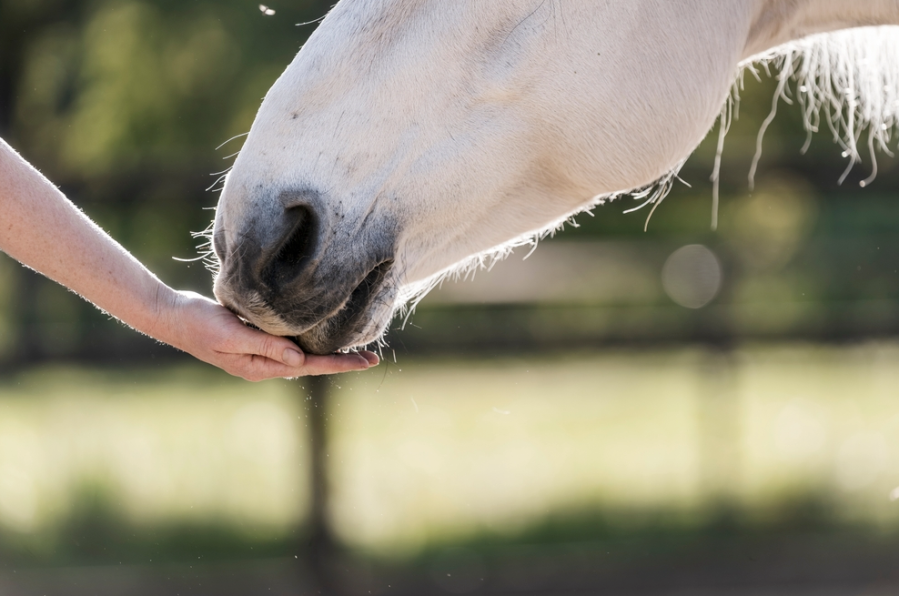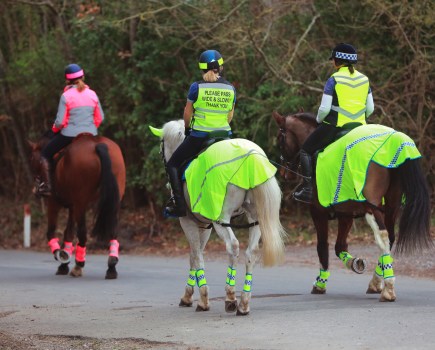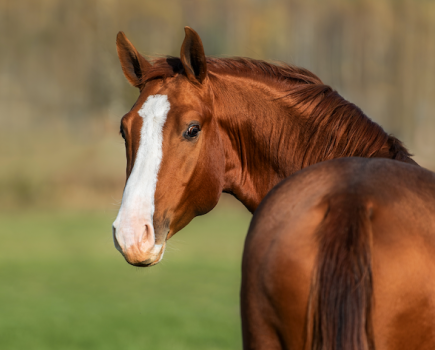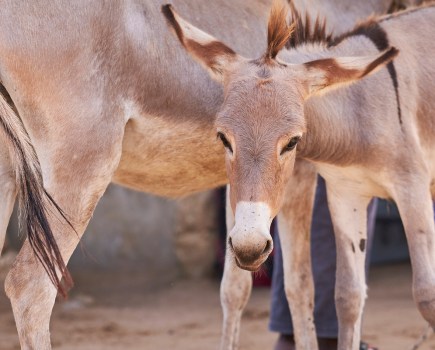It is a pitiful sight. Saoirse, a grey Connemara mare, is standing with her head over the door. Green mucus is dripping profusely from both nostrils and around her muzzle is an accumulation of frothy saliva.
The pony has choke – an obstructed oesophagus, the tube that connects her throat to the stomach. As I watch her, she coughs and expels more frothy fluid. When she breathes, I can hear bubbling fluid in her main airway. She lifts her head and makes a semi-retching movement with her head and neck.
The oesophagus starts directly above the trachea at the back of a horse’s throat for the first one-third of the neck. Then it moves to the left side until it enters the chest.
If you watch carefully, when a horse swallows you can see the food bolus appear just above their jugular vein on the left, around half down the neck.
You can then see it be propelled downwards by the muscles in the oesophageal wall. When I do a demonstration at Pony Club Camp, I get the kids to watch it as we feed a pony. Most are amazed and have never noticed it.
Why has this happened?
Why has choke happened to Saoirse?
Most obstructions are, perhaps surprisingly, not caused by solid objects such as a piece of carrot or apple, but by an accumulation of food that has not been properly moistened by saliva.
It is propelled down the neck as a semi-dry ‘sludge’, which eventually gets stuck, often over the heart where there is a natural narrowing of the oesophagus.
A significant length may be obstructed, not just one small area, as food material accumulates behind the obstruction.
The horse soon becomes aware of the obstruction and makes retching motions to clear it. They continue to produce saliva, which goes down the oesophagus, meets the obstruction, and then flows back up, appearing at his nose and mouth.
Some may even flow into the trachea (windpipe), causing the horse to cough.
A classical cause of choke
A classical cause of choke is the horse gaining access to unsoaked sugar beet. While it is reasonable to assume that swelling of the sugar beet when mixed with saliva in the oesophagus causes the obstruction, ‘choking’ occurs very quickly, almost before it has had time to swell significantly.
It may be that it’s the spongy, shredded nature of the sugar beet material, when mixed with saliva, is also contributing to causing the obstruction.
We vets most commonly get called to choke cases at the evening feed. The horse is brought indoors and given a feed, which it then gorges, not chewing and salivating properly.
After having eaten only, say, a quarter of its feed, it’s obstructed. The horse backs away from the feed, makes retching movements and can appear almost colicky.
Over the next hour or so the other symptoms appear. Why we only rarely see these at the morning feed I cannot explain. Perhaps a horse being brought in is extra greedy?
Taking action
What to do next? Fortunately, the great majority of choke cases — except perhaps those caused by dry sugar beet — actually self-cure. When I am notified of a case, I instruct the owner to wait for one hour.
During this time the horse will be deprived of food and water, and moved in a stable with non-edible bedding. If all goes well, the retching motions and salivation will stop during this period.
I then suggest the horse is ‘test-fed’ just to check. The feed needs to be something I can easily flush away if an obstruction is still present — feeding soaked nuts or simply allowing the horse to graze for a few minutes, will do.
Saoirse was fed at around 7pm having spent the day at grass. As soon as the symptoms appeared the owner contacted her vets, and as I am the on-call vet, the call is passed to me.
I advise on the phone that she is monitored for an hour as normal, and then I phone again. The choke has not resolved, so it is time to act.
Flushing the obstruction out
I give an intravenous injection of a strong sedative. Before it fully takes effect (as it will depress the swallowing reflex), I pass a flexible tube up the pony’s nose, she swallows, and it enters her oesophagus.
I continue to pass it until it meets the obstruction. With the owner’s husband controlling the pony on her right side, I hand the other end of the tube to the owner, who attaches it to a metal hand pump I have ready, sitting in a bucket of water.
The sedative has now taken full effect. I instruct the owner to slowly pump water into the tube.
The principle is that the water goes down the tube, meets the obstruction and gradually flushes it away. The water, now with the obstructing food material, then comes back up around the tube, into the pony’s mouth, and then out onto the stable floor.
It is critically important that the pony’s head is kept low during this procedure to prevent the water, as it comes up, flowing backwards down into her trachea.
As the flushing continues, I find I can gradually move the tube further along the oesophagus as the obstructing food material is flushed away.
Eventually no more water refluxes up into the mouth, and I can move the tube freely forward into the stomach. The obstruction has cleared.
Main image (stock) © Shutterstock. NB Saoirse is not pictured







